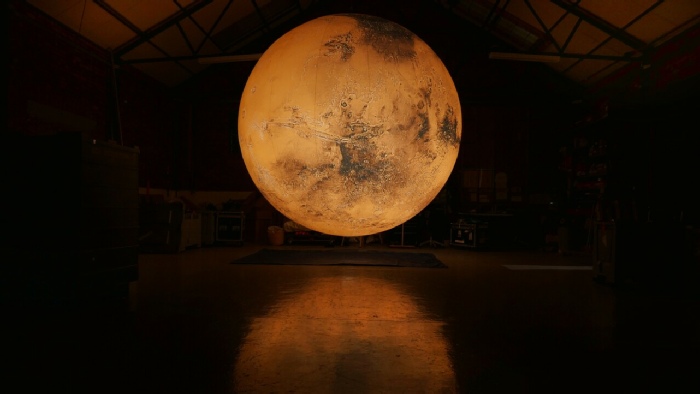Press Release
ArtScience Museum, Singapore presents Mars: The Red Mirror. Mars: The Red Mirror explores our connection to the planet Mars, synthesising 12,000 years of culture, art, history and science, from ancient times to the present day.
This exhibition takes visitors on an expedition through history and across cultures to learn how our neighbouring planet has been seen as the god of war, a god of agriculture, an ancestral symbol for masculinity and a muse for science fiction. It features over 300 objects, including rare scientific manuscripts, historical artefacts, an authentic Martian meteorite, films and contemporary art.

Mars : The Red Mirror
Artscience Museum, Singapore (Singapore)
25.11.2023 - 07.04.2024

First shown in Barcelona in 2021, this new version of Mars: The Red Mirror turns its lens to Asia. It traces Mars’ ancient imprints in China, India, and Japan, and celebrates the legacy of pioneering Asian astronomers. It provides a glimpse into Mars’ portrayal in Southeast Asian pop culture, and features work from Asian space agencies, such as JAXA from Japan and ISRO from India, as well as Singapore’s Space Faculty, who champion space technology’s transformative potential in Asia.
The exhibition provides a comprehensive cultural history of Mars. The representation of Mars as a god can be traced back to its depiction as Nergal in Mesopotamia 5000 years ago. However, the idea of the planet as a god has equally strong roots in Asia. In Hinduism, Mars was regarded as a symbol of courage and protection, and in East Asian Buddhism, Mars was believed to have an impact on longevity and prosperity.
The evolution of Mars from a mythical god to a potential home planet, began in the 19th century when Italian astronomer, Giovanni Schiaparelli, drew a map of Mars depicting linear structures he termed “canali”. A mistranslation of the word into ‘canals’ led many to believe that an intelligent civilisation was inhabiting Mars. With a growing fascination for Mars in the 19th and 20th centuries, Martian imagery began to bleed into literature, pop culture, science, engineering and media. Humankind’s dreams of Mars were heavily influenced by science fiction novels. Indeed, the exhibition takes its design and structure from one of the most prominent science fiction stories about Mars, the Mars Trilogy by Kim Stanley Robinson.
Amidst a worldwide scramble to prevent the collapse of Earth’s ecosystem, the notion of Mars as a possible “Planet B” is gaining traction. Contemporary artists, Venzha Christ (Indonesia), Nero Cosmos (Switzerland), Alexandra Daisy Ginsberg (UK), Luke Jerram (UK), Michael Najjar (Germany), Katie Paterson (UK), Superflux (India/UK) and Florian Voggeneder (Austria), explore and critique this idea. Artist and adventurer, Michael Najjar, has worked within the space exploration sector for many years, training as an astronaut with the Russian space agency, and documenting the development of a space-
Mars: The Red Mirror is the second exhibition in ArtScience Museum’s season of science fiction which launched in October with New Eden: Science Fiction Mythologies Transformed. It demonstrates how science fiction has shaped our Martian dreams, seeding many of the fantasies we have about traveling to Mars. But the show poses a crucial question: with the ecological problems on our own planet, should we really be looking to settle on another? Do we seek Mars as an escape, or as a mirror reflecting the challenges we must address here on Earth?
Mars: The Red Mirror is curated by Juan Insua and presented by ArtScience Museum and the Centre of Contemporary Culture of Barcelona (CCCB).
Exhibition 25 November 2023 -

© ArtCatalyse International / Marika Prévosto 2023. All Rights Reserved
Luke Jerram, Mars, 2023. Inflatable sculpture, fabric, internal lighting, accompanying soundtrack. Courtesy of the artist.
